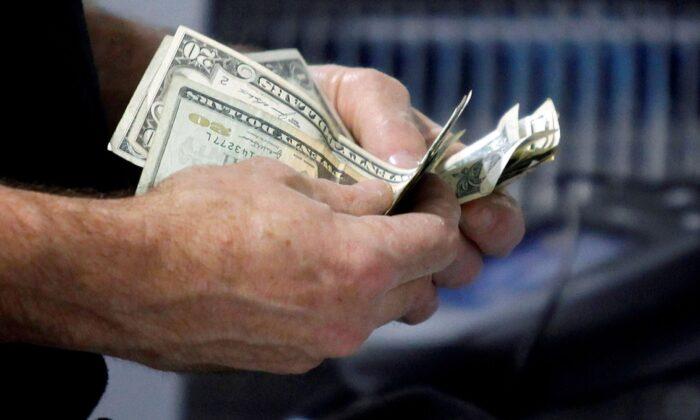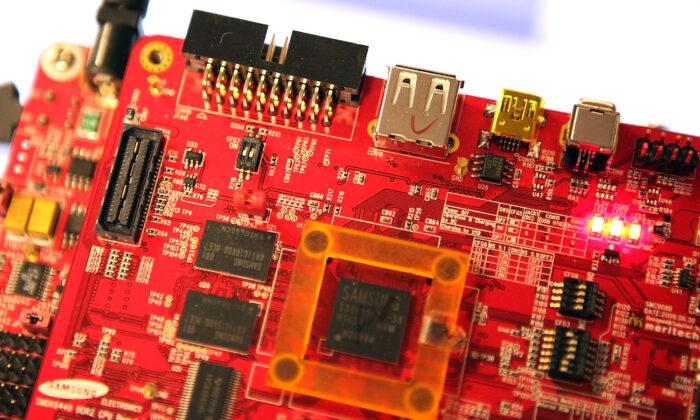Commentary
Russian invasions, skyrocketing inflation, Fed rate hikes, new COVID variants, you name it—financial markets are coming under siege by an army of factors that threaten everyone’s wealth.
It’s a confusing time for investors. You hear one thing from the talking heads on CNBC and something completely different from the ones on Fox Business.
Is the downside done in the market—time to buy the dip—or is there further to go? And if there is, how much further is possible?
And as the FED raises rates aggressively to tamp down inflation, will that be the final straw for stocks?
It’s a lot of noise to be sure, but the truth, is it’s not that complicated. The future of stocks boils down to one thing and one thing only: the inextricable relationship between bonds and stocks.
Let’s take a look.
The Bond Story
Here’s the problem:U.S. Treasury debt yields are considered a “risk free” rate of return. It’s what you get paid on the safest, most secure investment in the world. One with absolutely no risk to your money. (Because they’re “backed by the full faith and confidence of the Federal Government”—whatever that’s worth.)
That makes treasury yields the bottom line on which the valuation of every other investment is based.
Any other investment is inherently riskier. Corporate bonds, high yield (junk) bonds, and stocks all carry more risk and therefore should pay a higher premium.
Over a 10 year span, the average yield on Treasuries (the 10-year note) is 3.86 percent. Two years back, when the economy shut down and the Fed went into zero interest-rate policy mode, Treasury yields followed, falling to below 1 percent for the better part of a year.
So where are we today?
The 10-year Treasury note, the current benchmark for the Treasury curve, is back yielding right around 2 percent—just about where it was right before the pandemic lockdowns.
Now, with the talk of reining in inflation by increasing rates even more, these yields are likely to start heading higher still. That causes more than one problem.
And Now the Stock Market’s Side
As interest rates in the Treasury markets rise, the expected return/the dividend yield on stocks needs to go up too. You can get an idea of the S&P 500’s dividend yield by looking at the SPY (the S&P 500 ETF Trust).Back at the S&P 500’s high of 2,940 in late 2018, it’s accompanying dividend yield was 1.7 percent. Three months later, the index had cratered 21 percent and its yield had spiked to 2.12 percent at the low. (Like individual stocks, the SPY’s yield moves inversely to the price of the index.)
Over a span of the last 10 years, the average yield has been 1.84 percent. Over the past five years it’s been 1.71 percent.
If you’re keeping track of the numbers, they don’t add up well. If you look at the 10-year average yields, stocks have been roughly 2 percent under bonds. This means that stocks (the index) are way overvalued on a yield basis. They can only stay this overextended for so long before they have to reprice.
And judging from the levels we’re at, it’s not going to be pretty.
A Disconnect We Haven’t Seen in Over 20 Years
Thanks to all the attempts to support the stock market with an incessant flood of cheap money, the financial markets have become broken. Disjointed may be a better word. But whatever you call it, the markets are not working right.Today, the free money that has flowed into stocks has pushed the dividend yield on the SPY to just below 1.3 percent. To find a previous yield that low, you have to go all the way to the market’s high in 1999—just prior to the tech crash.
Back then, 10-year treasuries were yielding over 6 percent!
As yields continue to rise and the divergence between bonds and stocks grows wider and wider, the pressure on stocks will, at some point, become untenable.
The Fed has to hike rates to try and hit the brakes on inflation (an effort I believe will be only marginally successful). And the more aggressively it does, the sooner it’s going to hit the stock market.
“You broke it, you bought it” is a common mantra in retail shops. Too bad it doesn’t apply to the Fed.
So where does an investor put their capital when things start to crumble. Well, real assets like physical gold and silver are one option. But holding your money in cash and waiting out the repricing may be an even better alternative.





